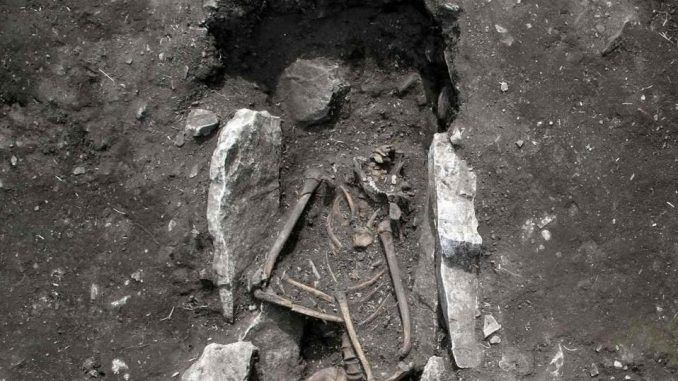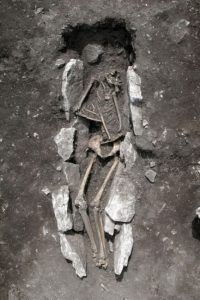
Archaeologists have discovered a 3,000-year-old skeleton of a teenager amid animal remains atop Mount Lykaion, the birthplace of the legendary Greek god Zeus.
According to ancient legend human sacrifices were made at an altar at the top of the mountain to appease Zeus.
The sinister discovery in the southern Peloponnese region of Greece could corroborate one of the darkest legends of antiquity….that human sacrifice took place.
Sigma Live reports:

BYPASS THE CENSORS
Sign up to get unfiltered news delivered straight to your inbox.
You can unsubscribe any time. By subscribing you agree to our Terms of Use
Greece’s Culture Ministry said on Wednesday that the skeleton, probably of an adolescent boy, was found in the heart of the 30-metre broad ash altar, next to a man-made stone platform.
Excavators say it’s too early to speculate on the nature of the teenager’s death but the discovery is remarkable because the remote Mount Lykaion was for centuries associated with the most nefarious of Greek cults.
HUMAN SACRIFICE
Ancient writers — including Plato — linked it with human sacrifice to Zeus, a practice which has very rarely been confirmed by archaeologists anywhere in the Greek world and never on mainland Greece.
According to legend, a boy was sacrificed with the animals and all the meat was cooked and eaten together.
Whoever ate the human part would become a wolf for nine years.
“Several ancient literary sources mention rumours that human sacrifice took place at the altar, but up until a few weeks ago there has been no trace whatsoever of human bones discovered at the site,” said excavator David Gilman Romano, Greek Archaeology Professor at Arizona University.
“Whether it’s a sacrifice or not, this is a sacrificial altar … so it’s not a place where you would bury an individual. It’s not a cemetery,” Romano told AP.
A very unusual detail, he said, was that the upper part of the skull was missing, while the body was laid among two lines of stones on an east-west axis, with stone slabs covering the pelvis.
So far, only about seven per cent of the altar has been excavated, between 2007-2010, and again this year.
“We have a number of years of future excavation to go,” added Romano. “We don’t know if we are going to find more human burials or not.”
Edmondo Burr
CEO
Assistant Editor
Latest posts by Edmondo Burr (see all)
- Police Arrest Suspect In Supermarket Baby Food Poisoning - October 1, 2017
- Seoul Secures Data From Electromagnetic Interference By N Korea - September 30, 2017
- The ‘World’s First Internet War’ Has Begun: Julian Assange - September 30, 2017


Be the first to comment